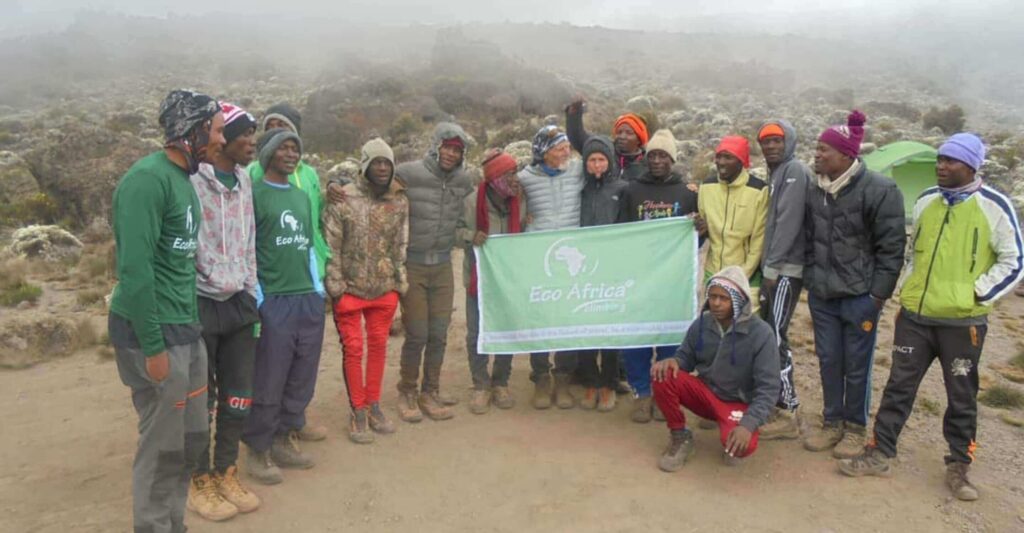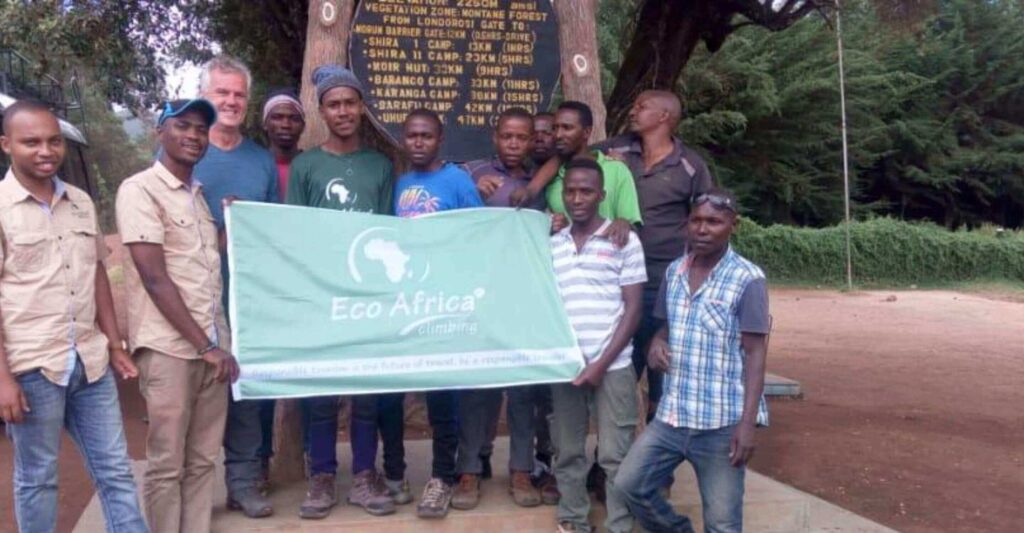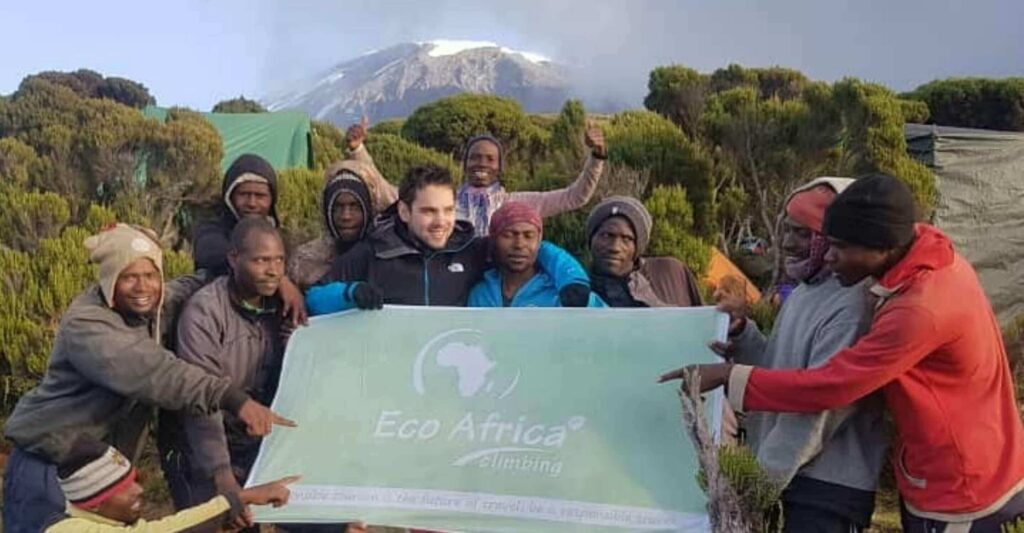WHAT TO CARRY ON YOUR KILIMANJARO DAY PACK
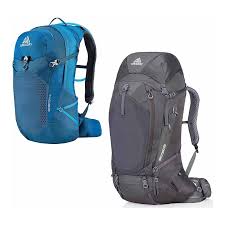
When climbing Kilimanjaro with Eco Africa Climbing, it’s important to pack your daypack wisely to ensure that you have everything you need for a safe and successful climb. Your daypack is the bag that you will carry with you each day on the mountain, so it’s important to pack light and only bring the essentials. Here are some things to consider when packing your daypack:
Your daypack on Kilimanjaro will contain waterproof gear, a sun hat, extra warm clothing, water, snacks, packed lunch, gloves, sunglasses, sunscreen, bug repellent, and a camera. Your larger duffel bag, with a maximum weight of 15kg, will be carried by our porters and you won’t see it until you reach your camp in the afternoon. The daypack you carry, which should ideally be 25-35 liters, will have everything you need for the day’s hiking.
As you ascend through the five different climate zones on Kilimanjaro, from the warm humid forest to the icy glacier-covered summit, you will need a variety of gear to handle the different weather conditions. During the daily briefing, our guides will inform you of the expected weather conditions and any specific items you may need for your safety and comfort on the trail.
It’s a good idea to have a waterproof stuff sack or similar to line the inside of your daypack, to protect your gear in case of heavy rain. Always ensure that your daypack has a built-in rain cover or purchase one separately and keep it accessible at all times in case of a sudden downpour.
Climbing Mount Kilimanjaro is an extraordinary, once-in-a-lifetime adventure that promises breathtaking vistas and unforgettable experiences. However, making your journey to the “Roof of Africa” a triumphant one demands meticulous preparation. Your trusty day pack will be your steadfast companion throughout this epic odyssey, accompanying you through the diverse landscapes and ever-changing weather conditions. Ensuring that you have the right essentials in your day pack is not just a matter of convenience; it’s a vital element of a safe and comfortable climb.
In this guide, we will provide you with valuable insights into what to carry in your day pack, arming you with the knowledge and foresight to conquer the challenges that lie ahead on Kilimanjaro’s slopes. Our goal is to ensure that you embark on your adventure fully equipped, physically and mentally, for this remarkable undertaking.
By packing your day pack with the right gear, you’ll not only enhance your comfort and safety but also increase your chances of reaching the summit. Kilimanjaro’s ever-changing climate and terrain make it essential to have the right equipment, clothing, and provisions. Our comprehensive guide will take you through the must-haves, ensuring that you’re well-prepared for the rigors and wonders of the Kilimanjaro climb.
Prepare, pack, and embark on a journey of a lifetime, with the knowledge that your day pack is your dependable companion, carrying the key to your Kilimanjaro triumph.
While climbing the mountain, your larger duffel bag, with a maximum weight limit of 15kg, will be carried by our diligent porters, freeing you from its weight until you arrive at the camp in the afternoon.
During your ascent, you’ll traverse five distinct climate zones, ranging from the warm, humid forest to the icy, snow-covered summit. As such, it’s imperative to have a variety of gear and clothing to adapt to Kilimanjaro’s ever-changing weather conditions.
Each day, following breakfast, our porters will take charge of your duffel bag, leaving you with a daypack, ideally between 25-35 liters in size, containing everything necessary for that day’s hike. The Kilimanjaro guides will provide a daily briefing, informing you of expected weather conditions and any specific items you should have to ensure your safety and comfort during the hike.
To safeguard your gear from heavy rain, it’s advisable to line the inside of your daypack with a waterproof stuff sack. If your daypack lacks a built-in rain cover, it’s wise to acquire one separately, ensuring it’s easily accessible in case of an unexpected downpour.
For a comprehensive list of what to bring on your Kilimanjaro climb, refer to our detailed Kilimanjaro Packing List, which guides you through all the necessities for a successful ascent.
Packing Essentials for Kilimanjaro Day Pack
- Water and Hydration: Staying hydrated is crucial at high altitudes. Pack a reusable water bottle or a hydration bladder to keep yourself well-supplied with water throughout the day.
- Layered Clothing: Kilimanjaro’s weather can change rapidly. Pack layers, including moisture-wicking base layers, insulating mid-layers, and a waterproof outer layer to adapt to changing conditions.
- Snacks and Energy Food: High-energy snacks like trail mix, energy bars, and chocolate can help keep your energy levels up during the climb.
- Rain Cover or Poncho: Don’t forget to protect your day pack and its contents from unexpected rain showers, you can also have a Poncho in your daypack. Both rain cover and poncho is a lifesaver.
- First Aid Kit: A basic first aid kit can be invaluable for treating minor injuries or ailments during your trek.
- Headlamp: Since you may hike in the dark, a reliable headlamp is essential.
- Sun Protection: Kilimanjaro’s high altitude means intense sun exposure. Pack sunscreen, sunglasses, and a wide-brimmed hat to protect yourself from UV rays.
- Camera: Capture the breathtaking views and memories of your journey with a lightweight camera.
- Personal Identification and Documents: Keep your passport and any important documents in a waterproof bag.
- Hand Sanitizer: Maintaining good hygiene is essential, especially when there’s limited access to washing facilities.
- Toilet Paper: Always have a small supply of toilet paper on hand, as it may not be readily available on the trail.
- Sun hat and Warm hat: Kilimanjaro’s varying climates require both sun protection and warmth, making these hats essential for your comfort and safety.
- Gloves: Protect your hands from the cold and maintain dexterity during your climb with the right gloves.
- Sunglasses: Shield your eyes from the intense mountain sun with a good pair of sunglasses.
- Bug repellent: Keep pesky insects at bay with bug repellent to ensure a more comfortable climb.
What Not to Carry on Your Kilimanjaro Day Pack
- Unnecessary Electronics: Leave heavy and bulky electronics at the base. You’ll want to minimize your pack’s weight.
- Large Water Containers: Large water containers are cumbersome and not practical. Opt for a lightweight water bottle or hydration system.
- Too Many Clothes: Overpacking clothing can make your day pack heavy and unwieldy. Stick to essentials and avoid redundancy.
- Heavy Books: Save the literary classics for home. Kilimanjaro is not the place to carry heavy reading material.
- Excessive Snacks: While snacks are essential, packing too many on your day pack can lead to unnecessary weight. Choose wisely and carry only what you’ll need and the rest put on your duffel bag.
- Unfamiliar Gear: Kilimanjaro is not the ideal place to test new gear. Stick to reliable equipment you’ve used before.
Things to Consider While Selecting Your Kilimanjaro Daypack
Selecting the right daypack for your Kilimanjaro climb is a pivotal decision that can significantly impact your comfort and overall experience during this epic adventure. To help you make an informed choice, we’ve outlined a set of crucial characteristics that your Kilimanjaro daypack should possess.
Lightweight for Agile Trekking
Kilimanjaro is a formidable challenge, and the weight you carry matters. Opt for a daypack that is lightweight, as it will ease your journey and reduce the strain on your shoulders and back. A lighter pack allows for more comfortable and agile trekking, making your ascent more enjoyable.
Hydration Reservoir for On-the-Go Refreshment
Proper hydration is essential when climbing Kilimanjaro. Look for a daypack that accommodates a good hydration reservoir to hold your water bladder. Easy access to water ensures you stay well-hydrated throughout your trek, helping you combat the challenges posed by high altitudes.
Pockets Galore for Easy Access
When selecting your daypack, consider options with side pockets, front stash pockets, and hip belt pockets. These compartments offer convenient access to essential items like snacks, your camera, or a map. Keeping your frequently used items within arm’s reach enhances your hiking experience.
Comfortable and Adjustable Straps
A comfortable daypack should come equipped with adjustable hip belts, sternum straps, and load lifter straps. These features allow you to customize the fit of your pack, distributing the weight evenly and reducing discomfort during extended treks. A well-fitted daypack can make all the difference on the mountain.
Gear Loops for Versatility
Look for a daypack that features sturdy gear loops. These loops allow you to attach items to the outside of your pack, increasing its versatility. Whether it’s securing trekking poles or hanging wet gear to dry, gear loops provide valuable options for organizing your equipment.
Compression Straps for Balanced Load
To maintain balance and stability while hiking Kilimanjaro, ensure that your daypack includes compression straps. These straps allow you to tighten your load and prevent your gear from shifting during the ascent. This feature is especially crucial when navigating uneven terrain.
Rain Cover: Protect Your Gear
Kilimanjaro’s weather can be unpredictable, and sudden rain showers are not uncommon. To safeguard your gear, especially sensitive items like electronics, it’s crucial that your daypack comes with a built-in rain cover or that you acquire a high-quality rain cover separately. Keeping your equipment dry is essential for a successful climb.
Your choice of a Kilimanjaro daypack should align with these essential characteristics. Prioritizing a lightweight, well-organized, and comfortable daypack will significantly enhance your experience as you tackle the challenges of Kilimanjaro.
For further guidance on preparing for your Kilimanjaro adventure and to access a comprehensive packing checklist, feel free to explore our detailed resources. We are committed to ensuring that you embark on your climb fully equipped and well-prepared for this remarkable journey.
Kilimanjaro Daypack Size: Choosing the Right Companion for Your Climb
Selecting the appropriate daypack size for your Kilimanjaro adventure is a crucial decision that can significantly impact your comfort and overall experience during this extraordinary journey. While it’s true that daypacks are typically smaller and lighter, considering the right size is essential to ensure your trek remains convenient and hassle-free.
Why Size Matters
Kilimanjaro’s majestic slopes present unique challenges, and you may be wondering how the size of your daypack plays into the equation. The truth is, your daypack will be your steadfast companion, carrying the essentials you need for the day’s hike. It’s true that Kilimanjaro porters will transport the majority of your gear from one camp to the next. Still, there are critical items that you should carry with you, such as extra clothing layers, water, snacks, sunscreen, and other small but vital items.
The Ideal Kilimanjaro Daypack Size
So, what is the ideal daypack size for Kilimanjaro? We recommend a medium-sized daypack, typically in the range of 30 to 35 liters. This size strikes a perfect balance between capacity and convenience. It offers enough space to stow your essentials comfortably without the need for overly strategic packing. A larger daypack allows you to access your items more effortlessly, especially when you’re fatigued, battling the high altitudes, or dealing with the occasional brain fog that altitude can induce.
While a 20 to 25-liter daypack is a feasible option, it requires meticulous planning and constant adjustments as you add or remove items. This meticulous approach, while manageable, can become taxing during your climb. A slightly larger daypack, like the 30 to 35-liter range, ensures that you have room to spare for your necessities, and you won’t need to overthink your packing strategy.
The Weight of Convenience
Your choice of daypack size can be directly linked to the convenience you experience during your Kilimanjaro climb. Opting for a larger daypack is akin to having a buffer of space, ensuring that you don’t have to fuss over every item’s placement. Instead, you can focus on the awe-inspiring landscapes, the challenges of the climb, and the overall experience without the added stress of meticulous packing.
Kilimanjaro Daypacks: Recommendations for Your Ascent
Choosing the right daypack is an essential decision when preparing for your Kilimanjaro climb. Your daypack will be your constant companion, carrying the essentials you need for each day’s adventure. To help you make the best choice, we’ve compiled recommendations for some outstanding daypack options designed to enhance your Kilimanjaro experience.
Gregory Zulu 30
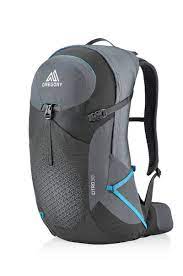
The Gregory Zulu 30 is a remarkable daypack that offers both comfort and innovation. Gregory Packs has introduced new suspension systems that work harmoniously with your body, ensuring a comfortable fit even during long treks. The Zulu 30 is perfectly sized for your Kilimanjaro adventure.
Key features of the Gregory Zulu 30 include:
- Mesh Back Panel: Designed to keep your back dry, the mesh back panel enhances breathability, preventing uncomfortable sweat buildup.
- Compression Straps: These straps allow you to secure your gear and maintain balance, especially on uneven terrain.
- Multiple Pockets: The daypack is equipped with various back and side pockets, making it convenient to organize and access your essentials.
- Hydration Compatibility: Staying hydrated is crucial on Kilimanjaro, and the Zulu 30 is compatible with hydration reservoirs, ensuring you have easy access to water.
Osprey Talon 33:
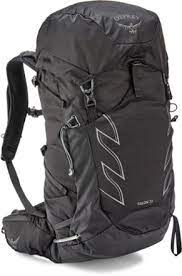
Osprey, a brand renowned for its exceptional backpacks, presents the Osprey Talon 33. This high-quality daypack offers several features that make it an ideal choice for your Kilimanjaro journey.
Here are some highlights of the Osprey Talon 33:
- Spacious Capacity: With 33 liters of storage space, this daypack provides ample room for your daily gear, ensuring you have everything you need.
- Lightweight Design: Kilimanjaro presents its share of challenges, and a lightweight daypack can make a significant difference in your comfort.
- Comfortable Hip Belt: The Osprey Talon 33 includes a comfortable hip belt, which is essential for distributing weight evenly and reducing strain.
- Compression and Hydration: It offers sound compression capabilities and features a hydration sleeve, making it easy to manage your load and stay hydrated throughout your climb.
- Additional Pockets: With a mesh harness slash pocket and a large stretch mesh front panel pocket, this daypack provides convenient storage options.
The North Face Borealis
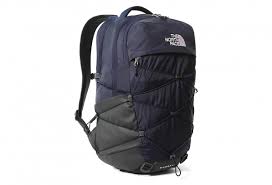
The North Face Borealis is a versatile daypack suitable for a variety of purposes, including your Kilimanjaro adventure. With a capacity of 29 liters, it strikes a balance between size and functionality.
Key features of The North Face Borealis include:
- Hydration Bladder Compartment: In addition to meeting trekking requirements, the daypack includes a compartment for a hydration bladder, ensuring you have easy access to water.
- Multi-Purpose: The Borealis is not limited to just trekking. It also boasts a laptop compartment, making it a practical choice for various activities.
- Affordability: It offers an economical option without compromising essential features, making it a great choice for budget-conscious climbers.
Selecting the right daypack is pivotal for your Kilimanjaro expedition. These recommended daypacks—Gregory Zulu 30, Osprey Talon 33, and The North Face Borealis—have been carefully chosen for their comfort, functionality, and performance. Whether you prioritize innovation, lightweight design, or versatility, there’s a daypack to suit your needs. Make your choice wisely, and embark on your Kilimanjaro journey fully equipped for the adventure that awaits.
Women’s Kilimanjaro Daypacks: The Ultimate Companion for Your Climb
When embarking on a Kilimanjaro adventure, choosing the right daypack is crucial, and for women, it’s essential to find a pack that fits comfortably and meets all your trekking needs. We’ve put together a selection of top daypacks designed specifically for women, ensuring you have a reliable companion for your Kilimanjaro journey.
Osprey Kyte 36
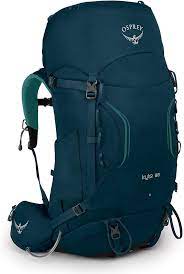
The Osprey Kyte 36 is a go-to choice for many female trekkers, known for its sturdiness and durability. It comes in two sizes: XS/S, which fits torso lengths from 13 to 17 inches, and S/M, designed for torso lengths from 16 to 20 inches. This range accommodates different body types, ensuring a comfortable fit.
Key features of the Osprey Kyte 36 include:
- Ventilated Back Panel: The daypack is equipped with a ventilated back panel that promotes airflow, helping keep you cool during your trek.
- Rain Cover: Kilimanjaro’s weather can be unpredictable, and the built-in rain cover provides protection for your gear during sudden downpours.
- Hydration Reservoir Pocket: Staying hydrated is vital at high altitudes, and the Kyte 36 includes a dedicated pocket for your hydration reservoir.
- Sternum Strap: The sternum strap helps distribute the pack’s weight evenly, reducing strain on your shoulders and back.
- Hip Belt Pockets: Small pockets on the hip belt provide convenient storage for snacks or a compact camera, ensuring easy access during your hike.
Deuter Trail Pro 30 SL
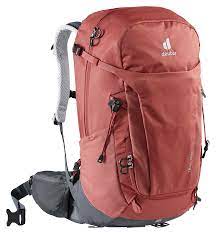
Deuter is known for producing durable packs, and the Deuter Trail Pro 30 SL is no exception. This daypack boasts an excellent cooling back panel, hip belt pockets, a hydration reservoir sleeve, sternum straps, and well-organized sections. However, it’s important to note that the Deuter Trail Pro 30 SL is available in a single size designed to fit torso lengths of 14 to 18 inches.
In addition to its functional features, like all Deuter women’s packs, this daypack features the signature tiny Deuter flower emblem.
REI Co-Op Rucksack 40
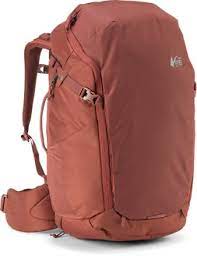
The REI Co-Op Rucksack 40 offers a practical choice for women trekkers, with a single size that fits torso lengths ranging from 16 to 18 inches. While it may not be the best option for those with shorter torsos, it’s a well-rounded daypack with several useful features.
Key highlights of the REI Co-Op Rucksack 40 include:
- Hydration Reservoir Pocket: Staying hydrated on Kilimanjaro is made easier with a dedicated pocket for your hydration reservoir.
- Ventilated Back Panel: The daypack features a ventilated back panel that enhances breathability, minimizing discomfort during long treks.
- Sternum Strap: A sternum strap aids in weight distribution and adds stability to your pack.
Selecting the right daypack is a critical step in ensuring a comfortable and successful Kilimanjaro climb. Whether you prioritize durability, comfort, or versatile features, these women-specific daypacks offer a range of options to cater to your needs. Remember, the right daypack can make a significant difference in your overall experience on this extraordinary journey.
Kilimanjaro Day Pack Accessories: Enhance Your Climb with Essential Gear
When preparing for the epic journey of climbing Mount Kilimanjaro, it’s not just your daypack that matters. Equipping yourself with the right accessories can make a world of difference in ensuring a safe and comfortable trek. Here, we delve into some must-have Kilimanjaro day pack accessories to enhance your climbing experience.
Hydration Bladder: Quench Your Thirst, Hassle-Free
Staying hydrated is paramount during your Kilimanjaro ascent, and a leaky bladder can be a hiker’s nightmare. The Platypus Big Zip Water Reservoir stands out as one of the best choices on the market. Available in 2L and 3L versions, we recommend the 3L Platypus for your Kilimanjaro hike. With its reliable design, you can focus on the journey ahead, knowing you have a consistent and hassle-free water source.
Rain Cover: Protect Your Gear from the Elements
Kilimanjaro’s ever-changing weather can surprise you with rain at any time of the year. To safeguard your daypack and its contents, a dependable rain cover is a must-have accessory. Our top pick is the Osprey Hi-Visibility Rain Cover. It offers superior protection while remaining affordable. Don’t let unexpected rain showers catch you unprepared; equip your daypack with this essential accessory.
Travel Bag Organizers: Streamline Your Packing
Efficiently organizing your gear can greatly improve your packing and accessibility on the mountain. Travel bag organizers are invaluable companions during your Kilimanjaro climb. They allow you to separate wet or dirty items from clean, dry ones, ensuring your essentials remain well-organized.
Two great options to consider are:
- Bagail Packing Cubes: These versatile organizers provide practical storage solutions for your gear. They come in various sizes and are perfect for separating and categorizing your belongings.
- Eagle Creek Pack-It System: Known for its quality and durability, Eagle Creek offers a range of pack-it solutions tailored to your needs. Their innovative designs streamline your packing process and help you stay organized throughout your journey.
Incorporating these travel bag organizers into your packing routine can significantly enhance your Kilimanjaro experience. Keep your gear neatly separated, making it easier to access items when you need them. From separating clean and dirty clothes to efficiently organizing your trekking essentials, these organizers offer practical solutions for climbers.
As you gear up for your Kilimanjaro adventure, don’t overlook the importance of these day pack accessories. Equipping yourself with a reliable hydration bladder, a protective rain cover, and efficient travel bag organizers can elevate your trek, ensuring you’re well-prepared for whatever challenges the mountain presents
Essential Insights on Kilimanjaro Daypacks
When embarking on the awe-inspiring journey of Climbing Mount Kilimanjaro, preparation is paramount. One key element of your preparation is selecting the right Kilimanjaro daypack. This article aims to provide you with essential insights into the world of Kilimanjaro daypacks, ensuring you make an informed choice for your adventure.
Eco-Friendly Packing: Say No to Single-Use Plastic Bags
It’s essential to start on the right foot by respecting the environment and local regulations. Tanzania has wisely implemented a ban on the use of single-use plastic bags. As a conscientious traveler, please ensure that none of the items in your luggage are packed in any kind of plastic bags. Instead, we recommend using reusable packing cubes. These cubes allow you to separate and organize your belongings efficiently while being eco-friendly. By adhering to these regulations, you contribute to the preservation of Kilimanjaro’s pristine environment.
Ditch the Disposable Plastic Bottles
Another eco-conscious decision to make is to refrain from using disposable plastic bottles on Kilimanjaro. The Kilimanjaro National Park has stringent rules against these environmentally harmful items. Instead, opt for reusable water bottles or hydration bladders. This simple choice helps protect the mountain’s fragile ecosystem and keeps it clean for future generations of climbers.
Understanding Weight Limits: Packing Smart for Kilimanjaro
The Kilimanjaro National Park enforces strict weight limits to ensure the safety and well-being of porters. Your main equipment bag, which includes your sleeping bag, must not exceed 15kg. While this may sound limiting, it’s more than sufficient to accommodate your needs on the mountain.
Before setting off on your Kilimanjaro adventure, your bags will be weighed at our office. This process ensures compliance with the weight limit regulations. If your bag is overweight, you’ll need to remove items and leave them at the hotel. Therefore, it’s crucial to weigh and manage your luggage efficiently to avoid last-minute inconveniences.
The Role of Your Kilimanjaro Daypack: Your Trusted Companion
A Kilimanjaro daypack is your constant companion during the ascent. It serves as your on-the-go storage for items you’ll need while hiking. Your daypack should be equipped to carry between 25-40 liters, providing ample space for your essentials.
Here’s what you should consider packing in your daypack:
- Water: Staying hydrated is essential at high altitudes.
- Extra layers: Weather on Kilimanjaro can change rapidly; having extra clothing is crucial.
- Sunscreen: Protect yourself from the sun’s intense rays.
- Medication: Carry any necessary medications.
- Camera: Capture the breathtaking views of your journey.
Securing Your Kilimanjaro Day Pack
While Eco-Africa Climbing offers secure services, it’s advisable to lock your Kilimanjaro day pack when leaving the camp for your Kilimanjaro hike. This additional security measure ensures the safety of your belongings and provides peace of mind during your adventure.
Tips for Packing Your Kilimanjaro Daypack
When preparing for a trek as monumental as conquering Mount Kilimanjaro, careful consideration of your gear is paramount. Your daypack, your constant companion during the journey, holds the key to your comfort and convenience on the mountain. To help you navigate the nuances of packing your daypack effectively, we offer a set of invaluable tips that, when adhered to, can enhance your experience and even optimize your climb.
Travel Light, Travel Right
Before setting foot on Kilimanjaro’s awe-inspiring terrain, one essential rule reigns supreme: keep your daypack as light as possible. Your guides, experienced in these challenging conditions, will provide you with daily recommendations on what to bring based on the altitude and weather conditions. Adhering to their counsel ensures that you bring only what’s necessary, minimizing the strain on your shoulders and back.
The Weight of Water
One of the heaviest items you’ll carry in your daypack is water. To lighten your load as the day progresses, make a habit of regular hydration. Consistently sipping from your water supply not only quenches your thirst but also reduces the burden you bear.
Sunscreen and Chapstick: Easy Access Essentials
The African sun can be relentless at altitude. To shield yourself from its fierce rays and dry winds, always keep sunscreen and chapstick readily accessible in the hip belt of your daypack. This way, you can reapply sunscreen as needed to prevent sunburn and keep your lips moisturized in the arid mountain air.
Batteries: Always Have Spares
Kilimanjaro’s cold climate can be tough on electronic devices. Whether it’s your camera, headlamp, or GPS, these gadgets often demand batteries. However, batteries tend to drain faster in the cold. The solution is simple: carry spares. Having extra batteries on hand ensures that you don’t miss out on capturing the stunning landscapes and moments that Kilimanjaro has to offer.
Gloves: More Than Just Warmth
Gloves, while essential for keeping your hands warm in the mountain’s chill, serve a dual purpose. They are also effective in protecting your hands from the intense sun at high altitudes. To stay comfortable and sunburn-free, consider gloves with UV protection.
Rain Cover: Keep Your Gear Dry
Kilimanjaro’s weather can be unpredictable, and sudden rain showers are not uncommon. To protect your gear, especially items like your camera and electronics, ensure that your daypack has a rain cover. If it’s not built-in, invest in a quality rain cover that fits your daypack snugly.
Waterproof Stuff Sack: An Added Layer of Protection
In addition to a rain cover, a waterproof stuff sack can provide an additional layer of defense against the elements. Line the inside of your daypack with this waterproof sack to keep your gear dry even in the event of heavy rain. It’s a simple yet effective way to safeguard your valuables.
For more in-depth insights on packing for Kilimanjaro and to ensure you’ve covered all the essential gear, we recommend referring to our comprehensive packing checklist. This detailed resource will guide you through the intricacies of preparing for your Kilimanjaro adventure, ensuring that you embark fully equipped for a safe and successful climb.
Conclusion
A well-packed day pack is your lifeline on Mount Kilimanjaro. By following these guidelines, you’ll be prepared for the journey of a lifetime. Keep in mind the essentials, leave behind unnecessary items, and always prioritize comfort, safety, and hydration. With the right gear and preparations, your Kilimanjaro ascent will be a memorable adventure.
At Eco Africa Climbing, we provide detailed packing lists for our clients to ensure they have everything they need for a successful and enjoyable climb. We also offer gear rentals, including sleeping bags and hiking poles, and other mountain equipment’s for those who need them. It’s important to pack your daypack light and only bring the essentials to avoid unnecessary strain and fatigue. Our experienced guides will also be available to assist you with packing and ensuring that you have everything you need for a safe and successful climb.
We are committed to providing our clients with a safe and ethical Kilimanjaro climbing experience. Contact us today to start planning your Kilimanjaro climb and let us help you pack your daypack for success.
FAQs
Q: Can I use a regular backpack as my day pack?
While you can use a regular backpack, it’s advisable to invest in a proper day pack designed for hiking. These packs offer better support and comfort during your trek.
Q: How much should my day pack weigh?
Ideally, your day pack should not exceed 10-15% of your body weight. Keeping it light is essential for a comfortable climb.
Q: What’s the most important item in my day pack?
Water is the most critical item. Staying hydrated is key to preventing altitude-related issues.
Q: Should I carry cash on the mountain?
It’s a good idea to have some cash to use on the descend day to buy beer or drinks, but don’t carry a significant amount just not more than $200 per person. Keep it secure in a money belt or pouch.For the tipping it can be done after the climb so need to carry tip money on the climb.
Q: Can I rent equipment on Kilimanjaro?
You can rent some gear, like sleeping bags and hiking poles, from your tour operator. However, personal items like clothing and footwear should be brought from home.
Q: Is it safe to leave items in my day pack during rest breaks?
Yes, it’s generally safe to leave items in your day pack during rest breaks. However, it’s wise to carry valuables and important documents with you.
Our Top Recommended Ethical Kilimanjaro Climbs
Ethical Kilimanjaro via Northern Circuit Route 9 Days
The Northern Circuit route is one of the best routes on Kilimanjaro.The route approaches Mount Kilimanjaro from the west….
From USD $3250
Ethical Kilimanjaro via Lemosho Route 8 Days
The Lemosho route is one of the newer routes on the mountain and a superb choice for your climb, It is our preferred route…
From USD $2950
Ethical Kilimanjaro via Machame Route 7 Days
Machame (“Whiskey”) Route is also known as the “Whiskey” route, the Machame route is now the most popular route on the …
From USD $2650
